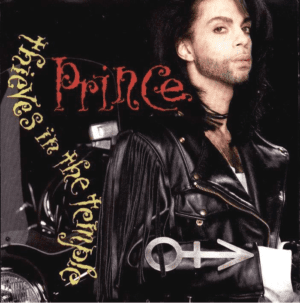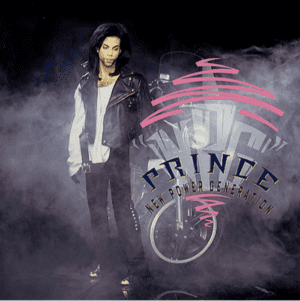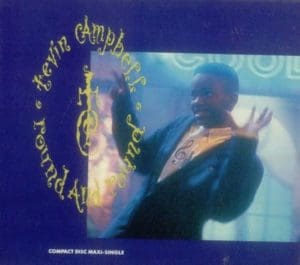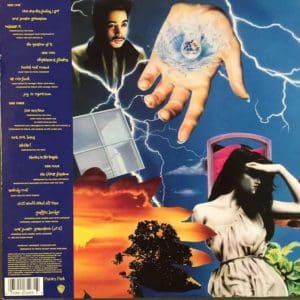With a run of albums demonstrating his Midas contact behind him, Prince opened up the vault for his twelfth studio effort, Graffiti Bridge – under no circumstances his most interesting, however pivotal in his profession…
Phrases by Beth Simpson
Graffiti Bridge is mostly considered marking the top of Prince’s ‘imperial part’, the interval throughout which all the pieces he touched appeared to show to gold. The movie has come to be often called an out-and-out turkey that stank so pungently that, notoriously, it went straight to video within the UK. The accompanying album, although, sandwiched between the ingenious Batman soundtrack and the well-regarded Diamonds And Pearls, tends to be forgotten and is nobody’s concept of their favorite Prince album. In Matt Thorne’s 2012 biography of the person, the chapter overlaying this period is entitled ‘What’s Mistaken With Graffiti Bridge?’.
Quite a bit if we’re speaking in regards to the movie. But when we’re concentrating on the soundtrack alone, properly, that’s one other matter totally.

Below The Bridge
In lots of respects the album was a rounding up train for forgotten tracks that had been mendacity round Paisley Park ready to discover a dwelling. Although the existence of an in depth stockpile of unreleased songs – the so-called ‘vault’ – solely turned identified later within the 90s, this was the primary time Prince had dipped into his unreleased stash to finish a brand new album mission. Up till now, he hadn’t wanted to. Why would he when he was placing out LPs as sturdy as Parade and Signal O’ The Instances?
The opener Can’t Cease This Feeling I Acquired dates again to 1982 when it was recorded at dwelling earlier than one other model was tried out 4 years later. We Can Funk (initially, ahem, ‘We Can Fuck’) had been recorded with The Revolution in 1986 however didn’t make the ultimate reduce for Parade. Tick, Tick, Bang dates from the Controversy periods of 1981 and had initially been put aside for woman group protégés Self-importance 6 to document earlier than Prince thought higher of it. In the meantime Pleasure In Repetition had been as a result of be launched on the Crystal Ball triple album in 1987 earlier than that magnum opus was pared all the way down to a double and launched as Signal O’ The Instances.
Paisley Park Vaults
However why did Prince even have to trawl the vault presently? A scarcity of an total imaginative and prescient for the whole mission could properly have performed a component. From the beginning, Graffiti Bridge had had a troubled gestation – the film had modified drastically since Prince had initially envisaged it again in 1987. Again then it wasn’t a sequel to Purple Rain in any respect, however a totally new story that might have featured Prince as ‘Camille Blue’, and one other character Ruthie Washington, who Prince had initially needed Madonna to play. He had even recorded a Graffiti Bridge soundtrack in 1988, a succinct 10-track document, which, other than A Query Of U and the title track, had a totally totally different tracklist.
However Madonna turned down the position and it quickly turned clear that post-Below The Cherry Moon Warners have been solely thinking about funding one other Prince film mission if it was pitched as a sequel to Purple Rain. Additionally round this time Prince rekindled his friendship with Morris Day and began writing materials for the reformed Time. Plus he’d additionally signed Mavis Staples and George Clinton to Paisley Park Data so why not embody them on an accompanying soundtrack too?
Certainly, that is the primary time a Prince album had contained tracks fronted by different artists, although in fact he’d written and produced them. There have been 4 songs by The Time, Prince’s celluloid rivals. Launch It and The Newest Trend are each the type of directionless funk exercises that Prince might write in his sleep, whereas Shake is a type of old-skool rock’n’roll dance quantity which purloins the keyboard chorus from 96 Tears. The Mavis Staples-featuring Melody Cool sees her undertake the titular persona, nevertheless it feels underdeveloped and repetitive, as if Prince had obtained bored midway by way of writing it.

Hidden Gems
Elsewhere there’s Tevin Campbell, the New Jack Swing baby star whose androgynous voice fits Spherical And Spherical’s minimal funk to a tee. Extra puzzling is the usage of George Clinton on We Can Funk. You’d come anticipating a grand funk summit between two of its biggest icons, however you may barely hear Clinton’s vocals within the combine. It’s as if he’s hardly there.
Additionally on the debit column there’s the title monitor, a considerably unlikely step in the direction of musical theatre – you could possibly think about the solid of a Broadway musical manufacturing giving their all to the somewhat trite strains about how “everybody’s searching for love” and “all the pieces’s gonna be alright”.
Nevertheless Graffiti Bridge does include a lot of gems that stand comparability with a few of Prince’s biggest work. The Query Of U is a splendidly languorous piece with syncopated handclaps and a guitar solo that confirms that Prince was top-of-the-line guitarists on this planet (in addition to all the pieces else).
Daring Technology
Then there was Elephants & Flowers, a gospel-influenced slice of Prince pop which incorporates the brilliantly odd chorus “there might be peace for individuals who love God lots”. Pleasure In Repetition is one other of these little gems that are likely to get forgotten about, with a halting half-spoken, half-sung vocal and one other eye-screwingly spectacular guitar solo from the person himself.
Maybe better of all is Nonetheless Would Stand All Time, a splendidly woozy-sounding, gospel-influenced ballad which had been first recorded in 1988 and had been thought of for the Batman soundtrack, earlier than being reworked with backing vocals from The Time for Graffiti Bridge. It’s one other one that always will get missed, however within the pantheon of Prince ballads it’s up there with Parade’s heartbreaking finale Generally It Snows In April.
The album’s lead single, Thieves In The Temple, was the final to be recorded for the mission, in February 1990. Although not on the identical stage as predecessors comparable to Kiss or Alphabet Avenue, its nonetheless one of many extra memorable moments from the album, and rightly turns up on most hit compilations. Its observe up, New Energy Technology (initially titled ‘Daring Technology’), would supply us with a sneak preview of his subsequent ensemble. The NPG itself hadn’t been totally assembled on the time of Graffiti Bridge’s launch although guitarist Levi Seacer Jr had been enjoying with Prince since 1987, drummer Michael Bland had been within the band for a 12 months and keyboardist Rosie Gaines performs on a number of Graffiti Bridge tracks.

New Jack Swing
Lyrically, New Energy Technology is as near a manifesto as Prince has ever drawn up. He had used the phrase earlier than – in a preamble to the Lovesexy LP monitor Eye No, Ingrid Chavez had intoned, “Welcome to the New Energy Technology”. However right here Prince fleshes out the idea with a two-part train in what might be described as militant funk, as he dismisses his opponents’ “quaint music, your previous concepts/ We’re sick and bored with you telling us what to do”.
There’s an undercurrent of this type of abrasiveness, this snippiness, in Graffiti Bridge, as he admitted in an interview with Rolling Stone in 1990: “I really feel good more often than not, and I like to precise that by writing from pleasure. I nonetheless do write from anger typically, like in Thieves In The Temple. However I don’t prefer to. It’s not a spot to stay.”
In fact, this feeds into the plot of the film – primarily The Child’s band versus The Time – however on one other stage you wonder if Prince himself was feeling the warmth of the altering musical local weather. We already know that he regarded hip-hop as a menace (see Useless On It from The Black Album) and he was conscious that New Jack Swing, the dominant pop model of late 80s/early 90, was largely the work of ex-Time members Jimmy Jam and Terry Lewis. After main the pack – creatively and critically – for therefore lengthy, he knew he had competitors and must elevate his recreation accordingly.
The Pop Picasso
Graffiti Bridge, then, just isn’t wanting highlights. However at an overlong 68 minutes operating time, it’s most likely the primary – however actually not the final – instance of a Prince album to endure from CD bloat. Whereas the double set Signal O’ The Instances appeared to fly by, Graffiti Bridge drags in the direction of the top and you could possibly make a convincing case for lowering it to a killer single album.
It’s value mentioning that critics weren’t unduly harsh on the time. Certainly, many have been exalting of their reward. Greg Sandow in Leisure Weekly claimed that Graffiti Bridge “appears to be a masterpiece”. Rolling Stone’s Paul Evans declared it as “a 17-song tour-de-force that reclaims Prince’s uncommon stature as a pop Picasso”. The Washington Put up’s Geoffrey Hines might barely include his glee, calling Graffiti Bridge “some of the erotic, sexually stimulating albums in pop music historical past.”
Sexually Stimulating
There was a component, it should be stated, of not desirous to be the primary courtier to cease applauding to those up to date opinions; as this level Prince had been feasting on crucial hosannas for over half a decade. As time glided by, extra critics started to swoop. John Freeland, writing in The Quietus in 2012, described it as “horrible”. Robert Christgau, the self-styled ‘dean’ of US rock critics, in the meantime, moaned that “half the music isn’t actually his, and the opposite half is overly delicate if not rehashed or simply weak.”
Not that Prince has ever had any time for critics. “There’s nothing a critic can inform me that I can be taught from. In the event that they have been musicians perhaps, however I hate studying about what some man sitting at a desk thinks about me,” Prince informed Rolling Stone round this time. “Now, on Graffiti Bridge they’re saying I’m again and extra conventional. Effectively, Thieves In The Temple and Tick, Tick, Bang don’t sound like nothing I’ve ever accomplished earlier than.”

A New Energy
He would have been extra stung by the album’s industrial efficiency. The one main territory during which it topped the charts was the UK, the place – not coincidentally – the movie didn’t get a cinema launch. It’s clear that the hammering that Graffiti Bridge the film obtained from movie critics affected gross sales of the album. Within the States it struggled to No.6 and a mere 500,000 gross sales (in contrast the Batman LP had shifted over two million; Purple Rain up to now has offered over 13 million).
This should have harm a person of Prince’s ego and Graffiti Bridge represents a turning level in his profession. By no means once more would he be diverted away from his core concern – music – by cinema. It additionally marks the beginning of a brand new collaborative part in his profession. Having made the final three data largely on his personal, he was clearly warming to the thought of getting a full-time band behind him as soon as once more. His subsequent mission would see the return to core values, a shared credit score with a backing group and would find yourself turning into his most fondly regarded and, arguably, greatest album of the last decade.
The Songs
Can’t Cease This Feeling I Acquired
Graffiti Bridge kicks off with Prince chatting with his father: “Expensive dad, issues didn’t fairly end up the best way I needed them to/ Generally I really feel like I’m going to blow up”. Adopted by, sure, an explosion. That’s the unlikely intro to a breezy pop monitor that’s a detailed cousin of Play In The Sunshine off Signal O’ The Instances.
New Energy Technology Half I
Essentially the most rapid monitor on the album was launched because the third single in October 1990 however might solely attain US No.64. The bridge lyrics “making love and music are the one factor value preventing for” might neatly summarise Prince’s entire worldview. Regardless of it primarily christening his new group, it’s a monitor that was by no means performed stay by Prince after 1991.
Launch It
A spoken-word intro by Morris Day and a squally sax solo ushers us into the primary look by The Time on Graffiti Bridge. Morris offers it his all, asking his band members “whose crib is that this? (My crib!). Whose wine you drinkin’? (Mine!)”. However regardless of his greatest efforts, there’s no disguising that that is Prince going by way of the motions, a funk jam that doesn’t go anyplace, that would have simply been reduce.
The Query Of U
One other monitor that had spent a very long time within the vault earlier than discovering a house, The Query Of U builds from a lolloping blues rhythm, including layers of handclaps, an excellent guitar solo, gospel vocals and even a contact of harpsichord to grow to be a factor of magnificence. At one level it was mooted as a doable single launch, however was finally cancelled.
Elephants & Flowers
Recorded by Prince and Prince alone on a day without work from the Lovesexy tour in 1988, Elephants & Flowers is a kind of tracks that could be a testomony to the person’s informal genius. It’s minor maybe, with lyrics that don’t stand shut scrutiny, however the hip-grinding guitar riff, gospel backing vocals and air of untrammelled pleasure make it one of many keepers on Graffiti Bridge.
Spherical And Spherical
Tevin Campbell’s function on Graffiti Bridge is an honest sufficient track, however arguably doesn’t fairly match on the album. Possibly that’s as a result of the completed model was remixed by DJ Junior Vasquez and thus misplaced a few of its Prince-iness alongside the best way. It did grow to be successful, although, reaching Billboard No.12 in September 1990.
We Can Funk
Tried out as ‘We Can Fuck’ as way back as 1983. Allegedly, it’s a duet with George Clinton, although you may hardly hear Dr Funkenstein within the combine. By the way, Prince reused certainly one of its synth strains when he wrote Martika’s Kitchen, the title monitor of the singer’s 1991 album.
Pleasure In Repetition
Seguing straight from We Can Funk, it is a strung-out, percussion-heavy monitor recorded by Prince alone again in 1986, besides from backing vocals from Susannah Melvoin. It’s one other that was on the unique tracklisting for Crystal Ball till it was pared all the way down to Signal O’ The Instances. He half-speaks, half-sings and unleashes one other unimaginable guitar solo, earlier than the monitor curls up inside itself and segues straight into…
Love Machine
Not The Miracles hit, however one other Time funk exercise. Curiosity is raised by the vocal interaction between Morris Day and Elisa Fiorillo – her first look on a Prince document – and people compelled chuckle ‘huh huh huh huh huh’ backing vocals. Additionally showing is Sweet Dulfer, the sax participant greatest identified for the hit Lily Was Right here, who would be part of the NPG as a full-time member later within the Nineteen Nineties.
Tick, Tick, Bang
One other relic dug up from the early Nineteen Eighties, from the periods for Controversy to be actual. With squally guitar, scratchy noises, synth bangs and crashes, it’s a kind of tracks the place he throws all types of unlikely components into the pot however nonetheless emerges with one thing that’s totally compelling.
Shake!
One of the best of the 4 Time tracks on the album is a Nineteen Nineties replace on these rock’n’roll dance data from 4 a long time beforehand. It’s featured within the movie and certainly it’s value testing the excerpt from the film on YouTube, which sees Morris Day and the band carry out the track on a stage surrounded by burning flames.
Thieves In The Temple
In distinction, the lead single is likely one of the darker moments from the album – it’s a uncommon second during which Prince confesses to loneliness (“my solely buddy is you”). There are Oriental touches on the synths, plus a harmonica pattern from The Chambers Brothers 1967 monitor I Can’t Stand It and a stop-start rhythm that makes it uncommon for a Prince single. That didn’t cease it reaching No.7 within the UK and No.6 within the US.
The Newest Trend
One other of the Time tracks that arguably might had been stored off the tracklist with a view to create a stronger album. The opening “Go Morris! Go Morris!” chants are most likely essentially the most memorable second of what’s a duet between Day and Prince that doesn’t go anyplace.
Melody Cool
Mavis Staples’ opening speech about “crossing bridges” and “trials and tribulations, heartache and ache” is, in fact, a nod to her position within the Civil Rights wrestle. A pity that the monitor doesn’t actually go anyplace after that, the lyrics largely consisting of “they name me Melody Cool” repeated time and again.
Nonetheless Would Stand All Time
The spotlight of the LP arrives late, a phenomenal ballad that leans closely into gospel, with delicate orchestration and The Time and The Steeles all offering backing vocals. This had been thought of for the Batman soundtrack however was changed by Scandalous and finally discovered a pure dwelling because the pivotal second within the film’s plot, with The Child successful his battle with a ballad, a lot to The Time’s chagrin.
Graffiti Bridge
Not certainly one of his most interesting moments, it should be stated. With its trite lyrics, the title monitor wouldn’t have sounded misplaced in Excessive Faculty Musical. Mavis Staples provides some vocal heft, as do Tevin Campbell and Sheila E, however nothing can rescue what’s one of many few Prince tracks that may solely be described as embarrassing.
New Energy Technology Half II
Graffiti Bridge ends with a reprise of this, which provides a rap from TC Ellis and an instrumental run out. The album ends with the sound of operating water and a drawled voice (Prince’s) intoning “the New Energy Technology have simply taken management”.
For extra on Prince click on right here
Learn Extra: Important Prince In The 90s

